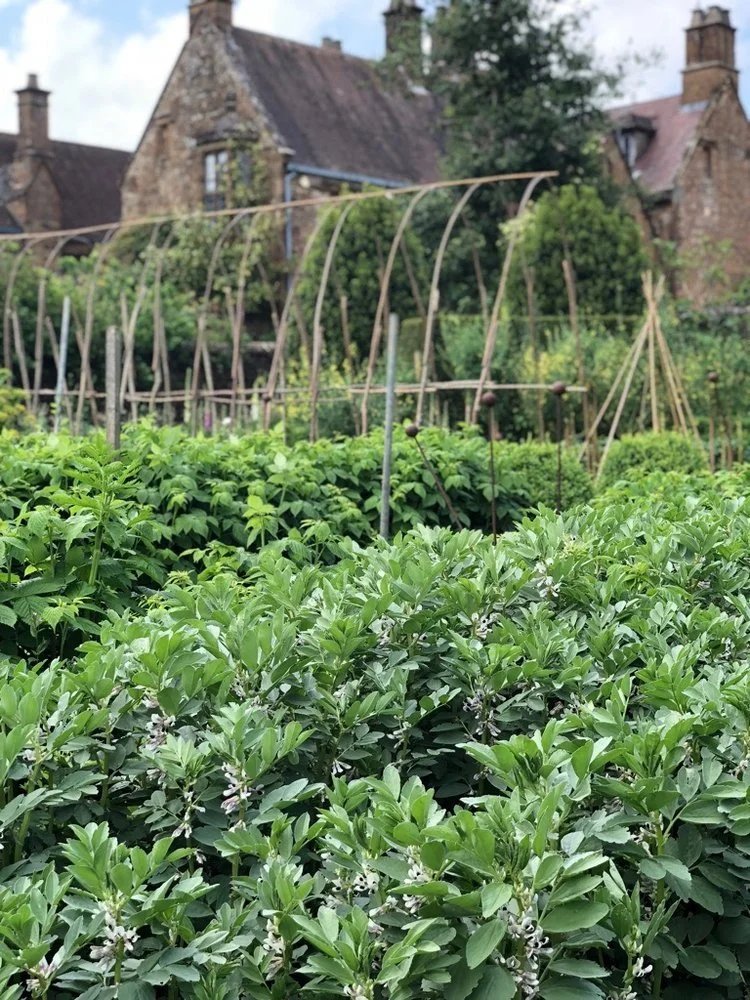Perfect for opening up compacted soils, releasing minerals, supporting biodiversity and suppressing weeds, green manures are a powerhouse for soil health.
We sow green manures throughout the year. They are brilliant infills for bare patches of earth; remember you always want plants growing in the soil to keep the photosynthesis machine working. They also benefit the health of the soil, opening up compacted soil, releasing minerals to the plant or fixing nitrogen and they are good weed suppressors.
We choose a variety of green manures depending on the time of year, how long we need them to grow for and how we want to help our soils. Our favourite green manures are alfalfa, buckwheat, crimson clover, fenugreen, fodder radish, forage rye, mustard, phacelia, white clover, winter tares(vetch) and yellow trefoil.
For varieties and their properties see our book ‘The Land Gardeners Cut Flowers’.
TOP TIP: Be aware that buckwheat, forage rye, vetch and black mustard inhibit the growth of seeds (allelopathic). If sowing seeds, allow four weeks after they have been been cut down. If planting seedlings, they can be planted straight away as they will not be affected.
FOR QUICK-GROWING GREEN MANURES IN SPRING AND SUMMER
Sow buckwheat, fenugreek, phacelia and mustard regularly throughout the spring and summer to fill in bare patches of earth, interplant between other crops and suppress weeds. We grow them until they are in flower, then cut them down, leaving their roots in the soil and using the stems on our compost. Or we grow them as a groundcover for a couple of weeks before hoeing them off at ground level.
TO BREAK UP COMPACTED SOILS
Sow fodder radish (in summer), phacelia (from spring to autumn) or alfalfa (for longer-term coverage) to penetrate compacted soils.
FOR LATE AUTUMN SOWING
Sow green manures to prevent damage from winter rains both washing away nutrients or compacting soil, to improve the structure of the soil, particularly to open up clay soils, and prevent weed germination. After we lift our dahlias in October, we sow phacelia which will survive a mild winter or forage rye to protect the soil through the winter. We also sow field beans over the top of our tulip bulbs in early spring.
In spring, the bulbs appear, we harvest them, then the field beans come up, we then cut down the field beans, leaving the roots in the soil as they fix nitrogen, and plant our cosmos through the remaining stubble. Forage rye is not attractive but is a good choice to withstand winter cold and wet and can be sown late in autumn.
FOR UNDER-SOWING
Sow yellow trefoil, winter tare (vetch) and white clover beneath or underneath other plants (eg roses or dahlias) to suppress weeds and feed the soil. All these fix nitrogen in the soil.
FOR LONGER COVERAGE
Sow alfalfa in summer as it is a frost hardy perennial so it will over-winter. You can grow it for 2 to 3 years, cutting it down regularly for your compost. It is good for dry soils and deep rooting. White clover is another good choice for a long-term green manure, for under-sowing, suppressing weeds and fixing nitrogen.
FOR BEES AND INSECTS
All green manures are good for insect life. We particularly like purple-flowered phacelia, white-flowered buckwheat and crimson clover.
FOR SOWING ON PATHS
A mix of three annual clovers – persian, egyptian and crimson – are good for suppressing weeds and fixing nitrogen between rows in the vegetable garden. You can mix this yourself or The Vineyard Fertility Building Mix is available from Cotswold Seeds.
FOR DIFFERENT SOIL TYPES
For dry soils – alfalfa and phacelia.
For light soils – buckwheat.
For clay soils – forage rye.
For heavy soils–field beans or winter tare (vetch).
For fertile soils – mustard.
For moist soils – fenugreek.
For sandy soils – crimson clover.




